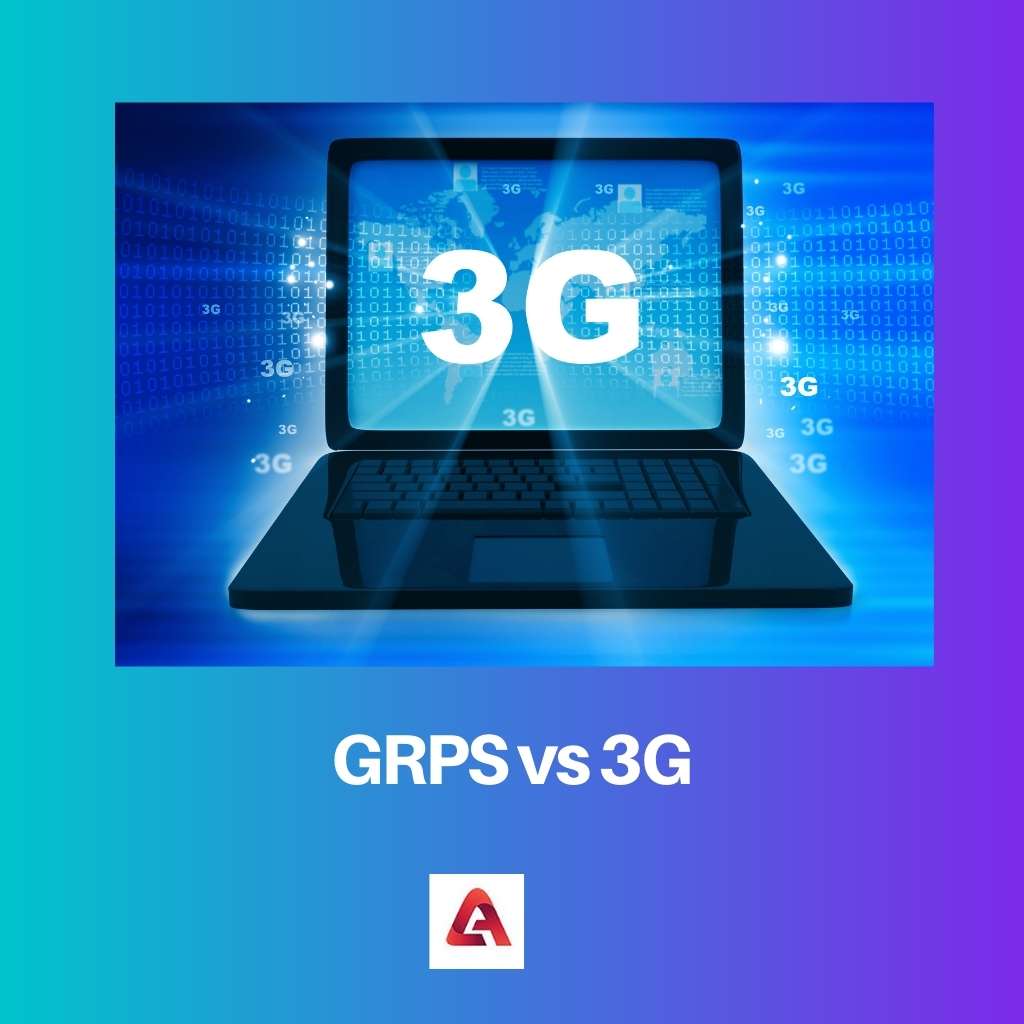GRPS and 3G is the most up-to-date technology, supporting fast transmission speed that is a 2G standard, whereas 3G is a 4G standard.
Moreover, just like GRPS, 3G offers two-way communication where it also comes with other perks like instant messaging, location-based notifications, and astounding features.
However, both GRPS and 3G are exceedingly well-liked and similar, yet, they are extraordinarily different from each other.
Key Takeaways
- GPRS (General Packet Radio Service) is an older, slower mobile data technology, while 3G (Third Generation) offers faster data transfer speeds and improved performance.
- 3G supports video calling, mobile TV, and multimedia streaming, whereas GPRS is limited to basic internet browsing and email.
- 3G provides a better user experience and faster download speeds than GPRS but consumes more battery life.
GRPS vs 3G
GRPS stands for General Packet Radio Service, which is a wireless data technology used for 2G and 3G mobile networks. It allows mobile devices to send and receive data. 3G is used to describe a mobile telecommunications technology that provides faster data transfer speeds than its predecessors.

GPRS elision stands for General Packet Radio Service. It’s a type of service that uses packet switching to transmit data at speeds up to 115 kbit/s over 2G networks.
For instance, GPRS is also used by satellite phones and other equipment that connects to the mobile phone network, where such devices are capable of accessing the Internet through any mobile telephonic network.
3G technology is the more modern form of cellular data transfer that’s used by the term “3G” stands for the third generation rather than a set of devices and protocols designed for wireless communication.
3G is the latest development in wireless internet technologies and allows up to 6 Mb/s or higher speeds.
Comparison Table
| Parameters of Comparison | GRPS | 3G |
|---|---|---|
| Elision | General Packet Radio Service | Third Generation |
| Data Restriction | GPRS is slightly limited. | The Third Generation is not limited. |
| Input Fetchability | GRPS has high input fetching velocity. | 3G has slightly low input fetching velocity. |
| Data Velocity | Reaching speeds of 56KBps and 21KBps. | Reaching speeds of 58KBps and 15KBps. |
| Cost | It is low-priced. | It is high-priced. |
What is GRPS?
GRPS is a quality level for mobile network tools that permit users to approach the internet wirelessly via a cellular web.
Moreover, GPRS is far and widely utilized by the cellular web worldwide, and it is crucially operated in smartphones that may be terminated with the advent of 4G LTE.
Moreover, GPRS is network assistance that permits users to ingress the Internet on their mobile phones. Utilizing GPRS, an account holder can utilize the Web tools proffer by their telecom operator as well as connect to ad hoc Wi-Fi hot spots.
GPRS is an untimely wireless input service that furnishes packet-switched communication between gadgets on compatible wireless networks and puts forward diversified levels of assistance depending on the smartphone model.
Moreover, it is authorized to put forward levels of network data speed permits for easy sharing of short messages up to the transferral of large files.
The supremacy of GRPS accorded is that it permits the connection of legacy devices to the Internet and other networks. However, the primary downside of GRPS connectivity is the relatively limited amount of data that can be transferred at any given time.
GPRS service is most commonly marketed to consumers as ‘2.5G’ or ‘2G’. It is the predecessor to the Enhanced Data rates for GSM Evolution (EDGE) standard and the successor to the original GSM data technology in Global System for Mobile Communication (GSM).
GPRS uses existing GSM infrastructure, and it can be implemented with a range of technologies, including SMS, Bluetooth, Wi-Fi, or with a combined network using both cell towers and wireless LANs.
What is 3G?
3G is the abbreviation for a technology that makes the internet faster and more reliable. It’s used to connect to a wide range of devices, not just laptops, smartphones, and desktop computers.
3G also has many different standards for wireless data transfer speeds. This can vary from 50kb/s downlink in 1xRTT downlink to 600mbps uplink.
3G is also commonly known as UMTS or HSDPA high-speed downlink packet access or WCDMA wideband code division multiple access.
It has several other names, such as UMTS 3G and CDMA2000 Advanced Mobile Phone System. Moreover, it sends more bits of information at one time en route to the destination, therefore increasing the amount of data that can be sent in a short period.
3G is a system used to allow internet connections on the move. It has been designed from the ground up to ensure that an internet connection is available whenever and wherever it is needed.
Users would need a data card that is compatible with the phone and each other so it can transmit data between both devices.
Negotiations screen this data over a cellular connection which provides a high-speed connection.

Main Differences Between GRPS and 3G
- The GRPS elision is General Packet Radio Service, whereas the 3G elision is Third Generation.
- The input curtailment of GPRS is small-scale restricted, whereas the input curtailment of 3G is not restricted.
- The input affectability of GRPS is high, whereas the input fetchability of 3G is slightly low.
- The data velocity reaching a speed of GRPS is 56KBps and 21KBps, whereas the data velocity reaching a speed of 3G is 58KBps and 15KBps.
- The GRPS is low-budgeted, whereas the 3G is high-budgeted.

References
- https://ieeexplore.ieee.org/abstract/document/6378365/
- http://scindeks.ceon.rs/article.aspx?artid=1451-43970929034M
- https://link.springer.com/chapter/10.1007/978-981-15-7530-3_41
